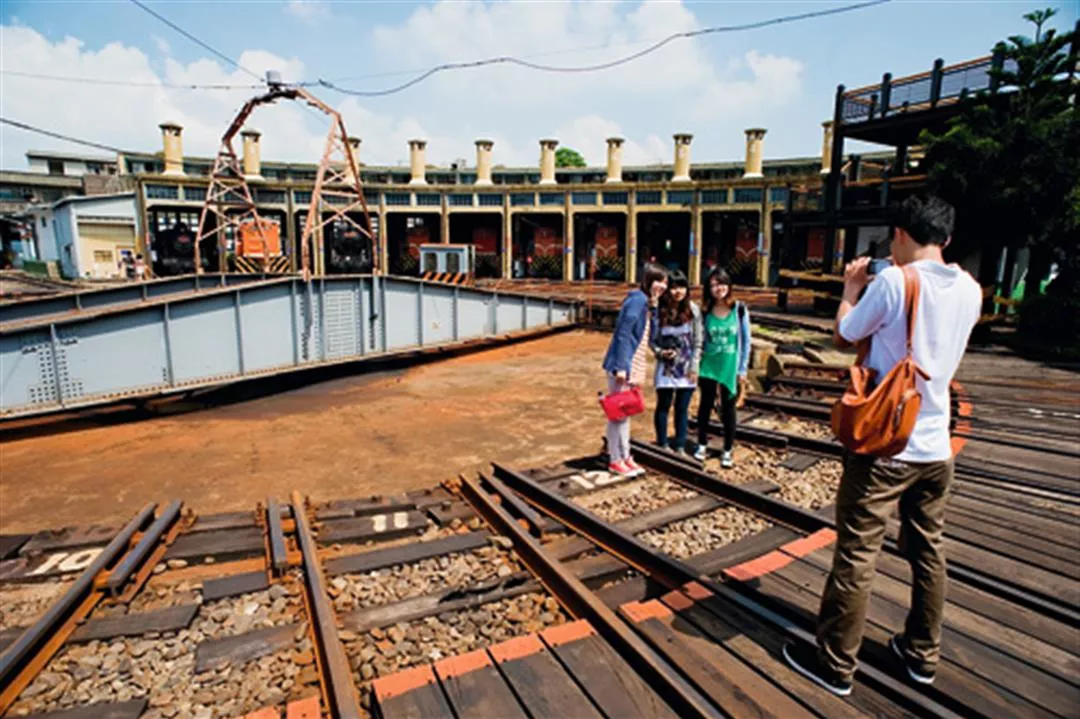360-degree turntable
Taiwan’s north-south rail line is divided into inland and coastal routes between Changhua and Hsinchu. Completed in the same year as the coastal route, the Changhua roundhouse was used exclusively to service locomotives plying that route.
For rail buffs and casual visitors alike, the most attention-grabbing feature of the Changhua roundhouse is the building housing the locomotive stalls.
The building is divided into 12 stalls, each with its own rail spur, and each just large enough to accommodate a single locomotive. The 12 stalls are radially arranged around a central point, where a 360-degree turntable operates. Spanning the turntable is a structure that somewhat resembles a steel bridge. Locomotives roll onto this bridge-like structure and wait there while it pivots so they can roll off onto a different set of tracks.
The turntable is at the center of the roundhouse, while the stalls form a 99-degree arc around it. All locomotives that come to Changhua must use the turntable to switch tracks and go into one of the stalls for maintenance.
Old records indicate that the roundhouse only had six center stalls when it was first completed in 1922. These were added to on either side until the last of today’s 12 stalls was built in 1933.
Standing on the turntable and looking toward the roundhouse building, one sees a series of stalls numbered from 1 to 12. According to Hu Wenhong, head of the inspection unit at Changhua Rolling Stock Branch, the TRA has continually added to its equipment to accommodate the move to diesel-electric and all-electric locomotives as well as the recommissioning of old steam locomotives for nostalgic sorties. Stalls 1 and 2 are now designated for the maintenance of 33 all-electric locomotives; stalls 3 to 9 are for 33 diesel-electric locomotives; and stalls 10 to 12 are specially set aside for three steam engines.
This is the only facility in Taiwan where all three types of locomotives are serviced.
Of the five steam engines that have been recommissioned in Taiwan, CK101, CK124, and DT668 are operated out of Changhua. Some especially observant rail buffs may have noticed that CK124 was used by cinema director Wei Te-sheng in the making of Warriors of the Rainbow: Seediq Bale.
Although only three stalls are used for servicing steam engines, the building still stands pretty much exactly as it was built between 1922 and 1933. Each of the 12 stalls, for example, retains its original pair of smoke jacks, one located at either end so there would always be one lined up with the steam engine’s smoke stack regardless whether the engine rolled forward or backward into the stall.
So, just how great would our loss have been if the Changhua roundhouse had not been preserved?

The Changhua roundhouse is a living piece of railway history that attracts visits from an unending stream of rail buffs every day.